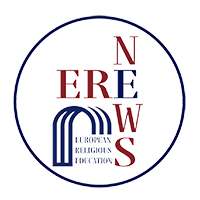Le pubblicazioni e i lavori più recenti dedicati ai Religious Studies
● Carlo Macale, Educazione alla cittadinanza e al dialogo interreligioso. Le sfide del pluralismo religioso nella scuola secondaria di secondo grado, Anicia, Roma 2020.
Il pluralismo religioso è una dimensione della nostra società multiculturale di cui la scuola italiana può essere lo specchio. L’insegnamento della religione come elemento sociale può divenire un percorso per un’educazione alla cittadinanza e, come elemento personale, può essere una strada per formare al dialogo. Questo volume, rivolto ad educatori, docenti (in specie di religione) e studiosi del fenomeno della multireligiosità, ha cercato di cogliere alcune peculiarità della sfida culturale del pluralismo religioso nella scuola italiana. All’interno del testo è esaminata la questione della religious education in un’ottica europea e nell’interpretazione che ne è data nel nostro paese. Vengono poi rintracciate alcune buone pratiche portate avanti nella scuola secondaria di secondo grado e nell’ultima parte si presentano sei casi studio su alcuni progetti didattici che hanno affrontato il tema del pluralismo religioso. Il volume si conclude con una proposta per l’oggi per affrontare la multireligiosità in chiave interculturale.
● Rodrigo Martinez, La Educación Religiosa Escolar (ERE) en América Latina, Fundación SM – PPC Madrid, 2021.
Il lavoro è consacrato a una descrizione relativa alle principali caratteristiche dell’educazione religiosa scolastica nei paesi di lingua spagnola e portoghese dell’America Latina. Fa parte dell’opera un’interessante ed utile mappa dell’area geografica oggetto dello studio.
Qui il link di una puntuale recensione a cura di Flavio Pajer: https://www.religionyescuela.com/construir/nuevo-paradigma-para-la-ere/educacion-religiosa-en-las-escuelas-de-america-latina/
● M. Rothgangel, M. Jäggle (eds.), Religious Education at Schools in Europe, Wien-Göttingen, Vienna University Press – Vandenhoeck & Ruprecht Verlage, 2014-2020, volumi 1-6.
Qui il link di un’attenta recensione a cura di Flavio Pajer: http://www.asfer.it/interventi/item/38451-recensione-v-r-novembre-2020.
● Joyce Ann Mercer (2021), Reports from Religious Educators at Work amid the COVID-19 Global Pandemic, Religious Education, 116:1, 1-2.
Link: https://doi.org/10.1080/00344087.2021.1876607.
● Jonas Kolb (2021), Modes of Interreligious Learning within Pedagogical Practice. An Analysis of Interreligious Approaches in Germany and Austria, Religious Education, 116:2, 142-156.
Link: https://doi.org/10.1080/00344087.2020.1854416.
● Angelo Licastro, Il crocifisso e i diritti del lavoratore nell’ambiente scolastico (aspettando le Sezioni Unite della Cassazione), in “Stato e Chiese e Pluralismo confessionale” Rivista telematica (https://www.statoechiese.it), fascicolo n. 7 del 2021 ISSN 1971- 8543, pp. 35-68.
L’articolo approfondisce la questione relativa all’esposizione del crocifisso nelle aule delle scuole pubbliche, indagando se questa prassi sia compatibile con i diritti dei lavoratori, in particolare con il diritto degli insegnanti a non essere discriminati. Per farlo, prende come punto di partenza una recente sentenza della Corte di Cassazione, che ha rimesso la questione alle Sezioni Unite della stessa Corte per una decisione.
Link pdf: https://www.statoechiese.it/images/uploads/articoli_pdf/Licastro.M_Il_crocifisso.pdf?pdf=il-crocifisso-e-i-diritti-del-lavoratore-nellambiente-scolastico-aspettando.
● Nadia Spadaro, La sfida del pluralismo educativo nella prospettiva sovranazionale e interna, in “Stato e Chiese e Pluralismo confessionale” Rivista telematica (https://www.statoechiese.it), fascicolo n. 6 del 2021 ISSN 1971- 8543, pp. 71-94.
Partendo dall’assunto che l’educazione gioca un ruolo fondamentale nella costruzione di una società inclusiva, il paper cerca di delineare il delicato equilibrio tra il rispetto delle istanze pluralistiche e la discrezionalità statale in campo educativo, con particolare riferimento all’Italia, dove una società sempre più multietnica si accompagna a tradizioni culturali e religiose profondamente radicate. L’analisi si concentra sul diverso approccio delle Corti sovranazionali e nazionali su questioni ormai cruciali del pluralismo educativo sia nella prospettiva del pluralismo per la scuola sia nella scuola.
Link pdf: https://www.statoechiese.it/it/contributi/la-sfida-del-pluralismo-educativo-nella-prospettiva-sovranazionale-e-intern.
● Abdurrahman Hendek, Religious Education Policy in Turkey and England: A Comparative Perspective, Dem, İstanbul 2020.
It has long been recognized that education policy has been questioned, critiqued, and reformed in response to a variety of supranational and national factors. In the field of religious education, there has been a growing argument for comparative works to study this relationship between wider factors and religious education policy.
This book seeks to present a comparison of religious education policy in state schools in two strikingly different countries, Turkey, and England, by interviewing various policy actors, to unravel some of the complexities and contestations around supranational and national factors and their influence on religious education policy. The findings of this book give insights into how different policy actors view and interpret supranational and national factors and their influence on religious education policy. The findings have relevance for debates about the role of religion in education within plural societies.
Link: 20201224142401232379650.pdf (dem.org.tr)
● Marcus Hoffmann, Gabriele Otten, Clauß Peter Sajak, Schritt für Schritt zum guten Religionsunterricht (Passo dopo passo verso una buona educazione religiosa). Praxisbuch für Studium, Referendariat und Berufseinstieg. Erscheinungsdatum: Oktober 2020 Schulstufe / Tätigkeitsbereich: Sekundarstufe Schulfach / Lernbereich: Religion, Ethik.
Link: https://www.friedrich-verlag.de/shop/schritt-fuer-schritt-zum-guten-religionsunterricht-31416
● Leni Franken, Church, State and RE in Europe: Past, Present and Future, published online: 15 Mar 2021.
Abstract of the Author: In this contribution, I will demonstrate how different kinds of RE in state schools are related to different church-state models: while non-denominational RE is common in nations characterized by “mutual independence” between the (Catholic) church and the state, non-denonminational RE is, today, more common in nations with a (former) Lutheran state church. Finally, no RE in state schools is a matter of fact in nations where state and church are separated. Given these recurring relationships between church-state models and RE, a shift from denominational to non-denominational RE is not always easy. Therefore, sometimes pragmatic alternatives come to the fore.
Link: https://www.tandfonline.com/doi/full/10.1080/15507394.2021.1897452?src
● Nils H. Korsvoll, A Double Bypass? Tracing How the Aims of Religious Education Are Negotiated Across Different Dimensions of the Curriculum in Norway, published online: 01 Feb 2021.
Abstract of the Author: Religious education (RE) across Europe is drawn between promoting intercultural education and fostering national community. Examining the national curriculum and three RE textbooks in Norway, I find that the former stresses common identity while the latter emphasize plurality and intercultural education. My observations join extant research on the different dimensions of the curriculum and furthermore show how priorities in national curricula may be circumnavigated in what Oddrun M. H. Bråten calls bypasses. However, classroom studies from Norway find that national identity is important for RE teachers, thereby demonstrating a double bypass, if you will.
Link: https://www.tandfonline.com/doi/full/10.1080/15507394.2021.1876496
● Giovanni Lapis, Religious Education and East Asian Religions. A Study-of-Religion\s Based Framework for Intercultural and Didactic Approaches, PhD Thesis (not yet published), defended the 23rd of March 2021, University of Venice (Italy).
Abstract of the Author: Recently, within the study of religions, there is a growing interest in that variegated field of “Religious Education” (RE), especially for what concerns public schools. Normative studies, focused on how to set up a non-confessional public teaching based on the academic study of religions, begin to enter the debate. This thesis is intended to reflect on the role that the topic of east-Asian religions can play in this regard. To this end, relevant themes and concepts related to the theoretical study of religions, didactics, intercultural education, as well as certain key aspects of the study of east-Asian religions are identified and discussed. As a touchstone in RE approaches and practices, I consider and analyze the case study of England, considered the most developed in terms of a non-denominational teaching. Through the comparison with the case studies and through an interdisciplinary discussion of the different academic areas mentioned above, I intend to show how the theme of the East-Asian religions can reveal hidden problems, enhance the achievement of certain objectives and propose new perspectives. I thus organize these observations in a theoretical-practical framework for future actual applications within a perspective of intercultural education.





